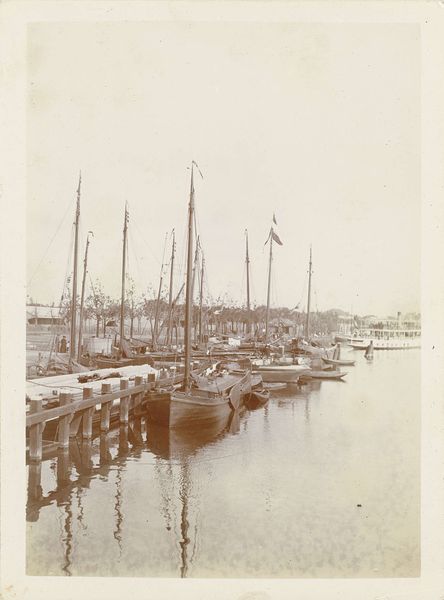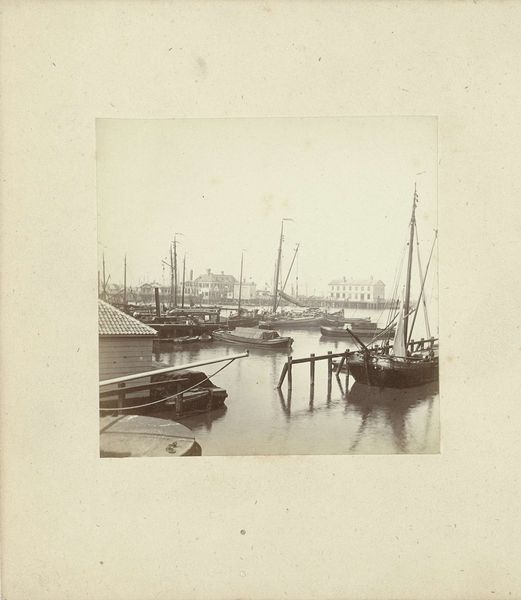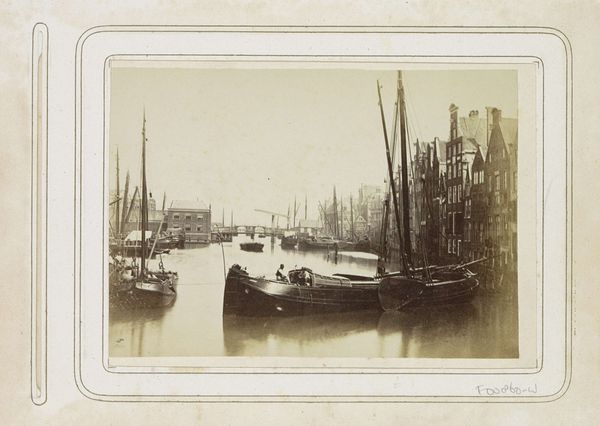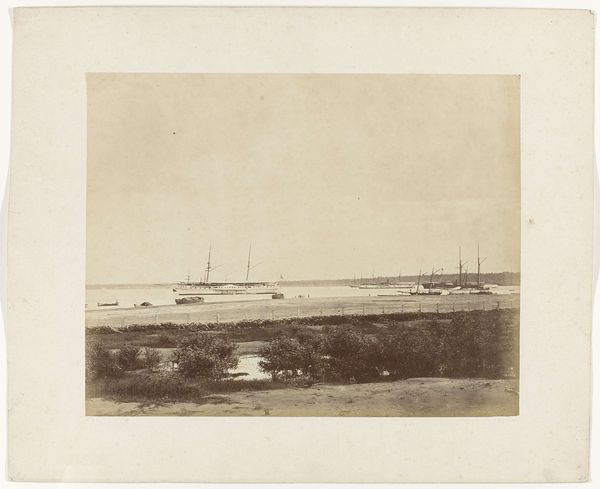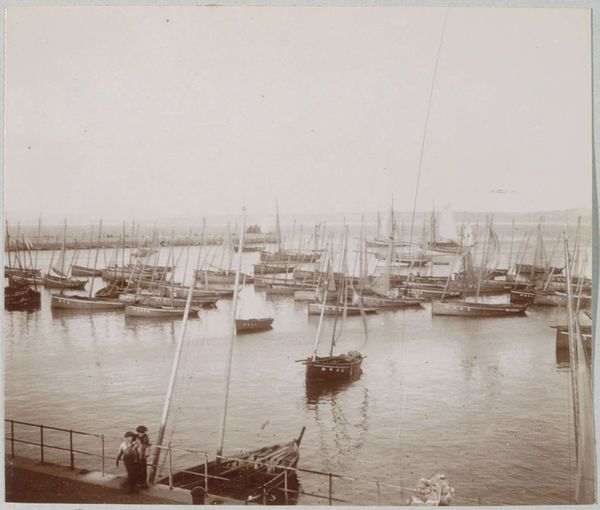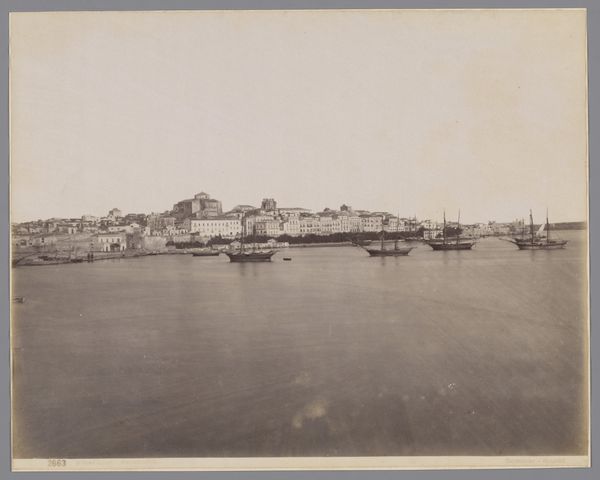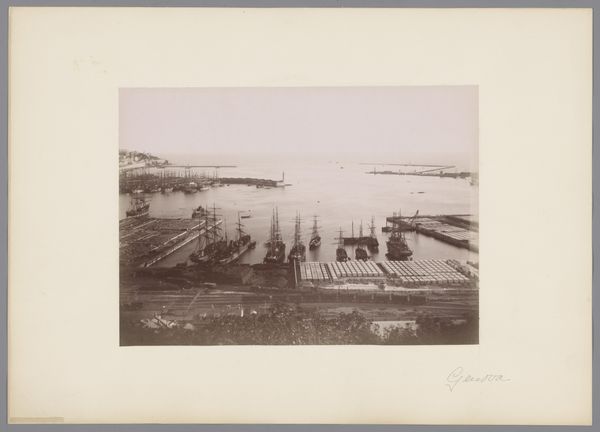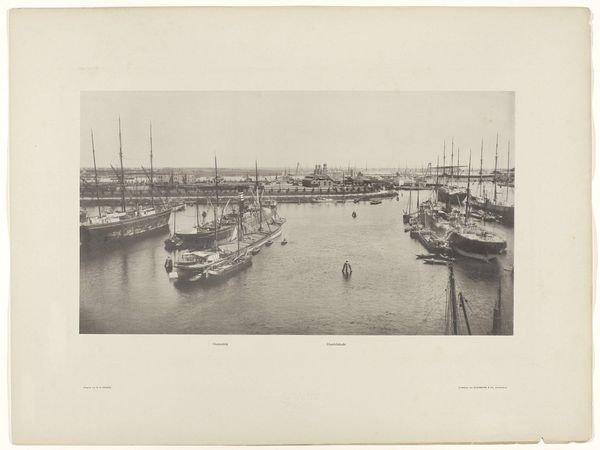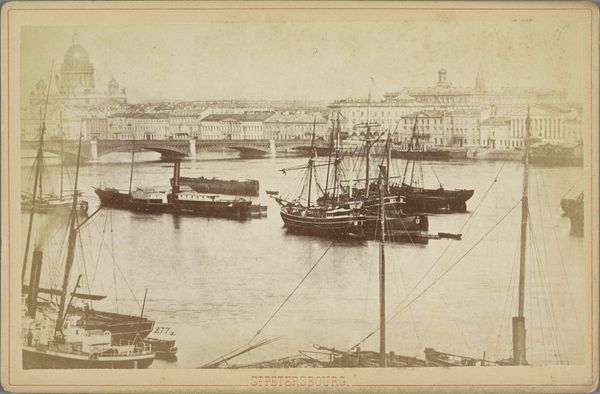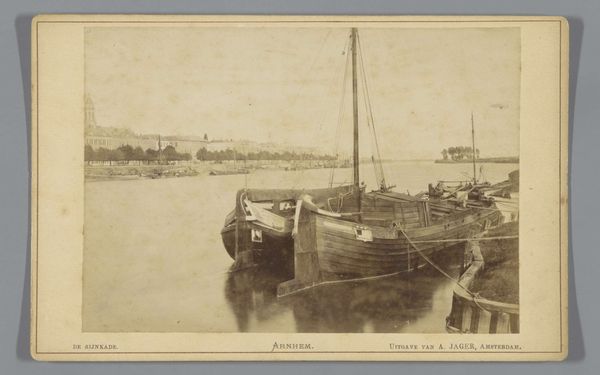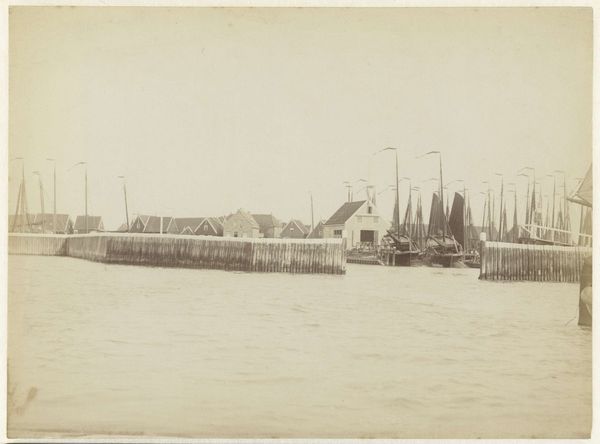
photography, gelatin-silver-print
#
asian-art
#
landscape
#
photography
#
gelatin-silver-print
#
cityscape
Dimensions: Image: 7 11/16 × 10 9/16 in. (19.5 × 26.9 cm)
Copyright: Public Domain
Curator: This is John Thomson's photograph "Swatow," created in 1869, a gelatin-silver print. What are your initial thoughts? Editor: It's quite a subdued image, almost melancholic. The muted tones emphasize the stillness of the water and the rigid lines of the masts and buildings create a powerful geometric contrast with the organic chaos of daily life that seeps through the boats crammed near the shore. Curator: Exactly! Thomson was very interested in documenting the material conditions of different cultures. In Swatow, now Shantou, he captured the visual textures of global commerce. We have the stark industrial architecture paired with the numerous smaller vessels, signifying both local industries and expansive trade networks that affected all aspects of the image's production. Editor: The composition directs my attention to those very contrasts. See how those many small boats mirror the individual workers, their cultural import? It highlights a historical period in global trade, and prompts considerations around both collective cultural heritage and singular emotional resonance. Curator: Indeed, but looking beyond symbolism is equally interesting. How the image itself was materially produced: glass plate negatives, the chemical processes to make the print... Thomson needed resources and logistical support, so that context should be acknowledged as we unpack the cultural and historical narratives present. The print's surface, that delicate gelatin silver, reminds me of how fragile historical documentation truly is. Editor: Absolutely, it underscores the complex narrative encoded in every captured scene, and suggests multiple layers of individual narratives. Considering its aesthetic properties, light becomes a powerful symbol, casting meaning into our human experiences and reflecting both the physical and psychic worlds within us. It calls us to deeply reflect. Curator: Considering its visual language in conjunction with Thomson's background in the Royal Geographical Society, we must acknowledge he likely benefited from the exploitative practices endemic to this period, shaping his depictions. It provokes the consideration of whose stories are told. Editor: A thought provoking point! These images function as bridges between worlds, inviting us to recognize our connected history. Curator: I find the dialogue generated is crucial—the historical analysis should constantly re-evaluate itself. Editor: I agree, seeing it allows a richer sense of humanity.
Comments
No comments
Be the first to comment and join the conversation on the ultimate creative platform.
